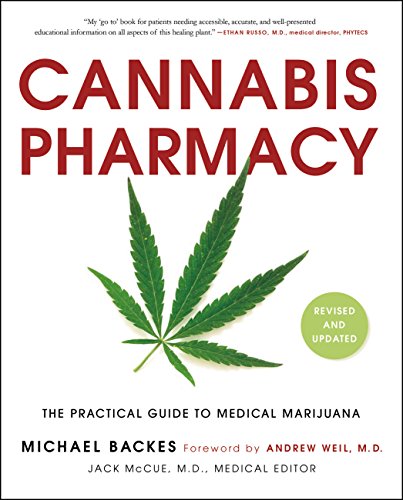A Closer Look: Cannabis Terpenes
/As you delve deeper into the world of medical cannabis, you’ll come across the word terpenes. Terpenes are organic compounds found throughout the plant kingdom (and even in some insects). Two hundred terpenes have been identified in the cannabis plant and today we’re covering some of the most common.
Terpenes - What’s the Point?
Like cannabinoids, terpenes are found primarily in the sticky resinous trichome heads that cover the plant’s beautiful flowers. Concentration of terpenes vary greatly, and are influenced heavily by strain genetics, growth & harvest conditions, processing, and storage. In addition to medicinal properties for humans, terpenes have protective qualities to the cannabis plant. Limonene and pinene in the cannabis flower serve as an insect repellant, while concentrations of caryophyllene found in both lower fan leaves and flower deter grazing animals due to the bitter taste.
Therapeutically, terpenes have medicinal value on their own, without cannabis. They interact with cell membranes, influence neuronal and muscle ion channels, neurotransmitters, the endogenous opioid system, and do a bunch of other things in the body that are way above my level of expertise. Terpenes also act synergistically with other cannabis compounds to produce medicinal benefit. This synergistic relationships is a driving factor in the distinct effects between different chemovars (strains). The more we understand cannabis terpenes, the less we have to rely on arbitrary indica vs sativa labels, allowing for more personalized cannabis medicine.
What’s That Smell?
Ahhh, the smell of cannabis. It’s a love/hate relationship for most of us. I personally LOVE it, but hated it as a teenager and college student trying to hide what I was doing. Terpenes are responsible for this woe. They give cannabis its’ distinct, yet flavored smell. Overtime you can learn to correlate odor with specific terpenes and therapeutic effect. I love working with cannabis coaching patients to identify the terpenes that work best for them. Overtime many of my clients are able to identify terpenes via smell, allowing them to choose appropriate cannabis flower strains with ease, even when lab results/terpene profiles aren’t available. I naturally am drawn to the smell of cannabis strains that work best for my body - my favorite strains also smell the best to me. Just a guess, but I’m sure I’m not alone and there is an evolutionary component to this natural attraction.
What’s the Deal with Added Terpenes?
Terpenes are found throughout the plant kingdom, not just in cannabis. As a cannabis consumer this is important to understand - because you aren’t always being sold cannabis terpenes. When cannabis is extracted into a distillate or similar concentrate, the majority of natural terpenes are destroyed and must be added back in after the fact. While some companies utilize cannabis derived terpenes for this, many dont and instead use botanical terpenes of various quality and concentrations. Some patients find they are irritated by or sensitive to botanical/plant based terpenes, while doing fine with cannabis plant derived terpenes. Be an informed consumer. Always ask if a vape or distillate product you are purchasing is using cannabis derived (CDT) or natural/botanical derived terpenes and make the choice that’s best for your body.
Some Things to Know
Terpenes are highly volatile compounds, meaning they evaporate and break down quickly. For this reason it’s important to exercise care when handling cannabis medicines. Store flower and concentrates in dark air tight containers and avoid exposure to heat and light. Both can break down terpenes and decrease medicinal value. Most terpenes are generally recognized as safe, since they occur naturally in foods. Overall, they tend to be non-sensitizing to the skin with low potential for allergic reaction.
Using Terpenes as a Roadmap
Cannabis patients are often overwhelmed by all the strain and product choices. One of the most beneficial things you can do to dial in your cannabis routine is to figure out what terpenes work best for your needs. Read through the list below and identify the terpenes that have therapeutic values that meet your needs and preferences. Then experiment with strains high in these terpenes. Do you notice any patterns? Does anything stick out for you? If you already have a handful of favorite cannabis strains see if you can identify the common threads between them. Are you drawn towards strains high in myrcene and linalool, or do you prefer strains high in limonene and pinene? It’s not a perfect science, but using terpenes as a roadmap can help patients find quicker results than the normal throw a dart at the wall style of cannabis trial and error. If you don’t have lab results available - you can use your nose and learn to identify the terpenes by smell.
Below I break down some of the most common terpenes found in cannabis, what they are good for, what they smell like, and where else you can find them. While I didn’t get too much into explaining the nitty gritty of the science behind the therapeutic effects, there is some really cool research out there supporting the therapeutic claims that I encourage you to dig a little deeper into.
Common Cannabis Terpenes
Limonene
Therapeutic Effects
Elevates mood, promotes stress relief, anti-depressant, anti-anxiety, anti-tumor, anti-reflux, gastrointestinal relief, weight loss, anti-acne, anti-bacterial, anti-fungal
Aroma
Citrus, lemon
Also Found In
Lemons, oranges, rosemary, juniper, peppermint, citrus
Notes About Limonene
Limonene is highly bioavailable, with rates of absorption via inhalation up to 70%. It also aids in the uptake of other compounds that are orally ingested or applied topically. Cannabis strains high in limonene are known for their uplifting and energizing effects.
Pinene
Therapeutic Effects
Broncho dilating, antibiotic, aids memory, anti-microbial, anti-asthmatic, modulates body’s inflammation response
Aroma
Pine, Woody, Mountain
Also Found In
Coniferous trees, pine, rosemary, basic, dill
Notes About Pinene
Pinene is known for its stimulating clear headed effect. It can enhance memory and alertness, making strains high in Pinene a good choice for those sensitive to THC’s unwanted cognitive effects. Patients with PTSD often prefer to avoid strains high in pinene, as it’s effect on memory is counter-productive.
Linalool
Therapeutic Effects
Anti-microbial, anti-fungal, anti-anxiety, sedative, sleep aid, muscle relaxant, anti-convulsant, pain relief
Aroma
Floral, spicy, herbal, lavender
Also Found In
Lavender, cinnamon, rosewood, mint, birch trees
Notes About Linalool
Linalool is prized for it’s calming and sedating properties, making it an ideal terpene for evening use. Strains high in linalool are often effective for anxiety, sleep, seizures, and pain.
Carophyllene
Therapeutic Effects
Anti-inflammatory, pain relief, anti-anxiety, anti-depressant, improved sleep, protective effects on stomach, beneficial for atherosclerosis, osteoporosis, colitis, diabetes, fibrosis, and nerve pain
Aroma
Spicy, peppery
Also Found In
Cloves, black pepper, hopes, rosemary, copaiba, thai basil
Notes About Caryophyllene
Caryophyllene is the most common terpene found in cannabis extracts or other cannabis formulations that have been heat processed. Conditions such as drying, storage, and decarboxylation can cause other cannabis compounds to convert to B-caryophyllene. Acting as a functional CB2 agonist, Caryophyllene mimics the effects of cannabinoids in the endocannabinoid system. It also has a synergistic effect with CBD, aiding in inflammation and neuropathic pain relief.
Myrcene
Therapeutic Effects
Anti-septic, anti-bacterial, anti-fungal, anti-inflammatory, sedating, pain relief, muscle relaxant, liver protective, anti-stress, relaxing
Aroma
Earthy, fruity, clove-like, pungent, musky
Also Found In
Mango, bay leaves, thyme, parsley, cardamom, hops, lemongrass, basil, eucalyptus
Notes About Myrcene
Myrcene is often dominant in strains labelled “indica,” and is responsible for the highly sedating and relaxing effects. Strains high in myrcene (above .5%) are great choices for sleep, pain, and anxiety. Myrcene has also been shown to enhances permeability of the blood-brain barrier and increase the maximum saturation level of CB1 receptors. These synergistic effects may result in increased THC psycho-activity.
Humulene
Therapeutic Effects
Anti-inflammatory, anti-bacterial, pain relief, appetite suppressant, weight loss aid, anti-tumor, pharmacokinetic
Aroma
Spicy, woody, earthy, “hoppy”, bitter smell
Also Found In
Hops, clove, basil, coriander
Notes About Humulene
Humulene’s appetite suppressing qualities make it a favorite terpene for those of us prone to cannabis “munchies” or are hoping to control weight.
Eucalyptol
Therapeutic Effects
Pain relief, anti-bacterial, anti-fungal, anti-inflammatory, anti-proliferative, anti-oxidant, stress relief, anti-asthmatic, stimulating effects
Aroma
Minty, spicy, fresh, camphor like
Also found in
Eucalyptus, bay leaves, tea tree, mugwort
Notes About Eucalyptol
Also known as Cineol. Eucalyptol applied topically causes a cooling sensation and localized anesthesia. It also can enhance transdermal delivery, making it a good choice for cannabis topical products.
Delta 3 Carene
Therapeutic Effects
Memory retention, healing broken bones, anti-inflammatory
Aroma
Sweet, pungent, evergreen
Also found in
Allspice, basil, bell peppers, cedar, cypress
Notes About Carene
Carene can contribute to dry mouth and eyes as it draws fluids from the body. Patients extra sensitive to these effects from cannabis, or those with Sjogren’s or other disorders affecting saliva production may want to avoid strains high in carene.
Terpineol
Therapeutic Effects
Anti-oxidant, anti-inflammatory, anti-proliferative, sedation, relaxation, pain relief, anti-seizure, anti-bacterial
Aroma
Floral, lilac
Also found in
Lilac, pine trees, lime blossoms
Notes About Terpineol
Terpineol has shown promise in reducing withdrawal and tolerance effects of morphine, while also offering a synergistic effect with CBD and B-carophyllene that could be beneficial for treating addiction.
References:
Russo, E.B. 2011. Taming THC: potential cannabis synergy and phytocannabinoid‐terpenoid entourage effects. British journal of pharmacology. 163 (7), 1344-1364.
Steep Hill Labs. Terpenes. [online] Available at: http://steephill.com/sciences/terpenes





























